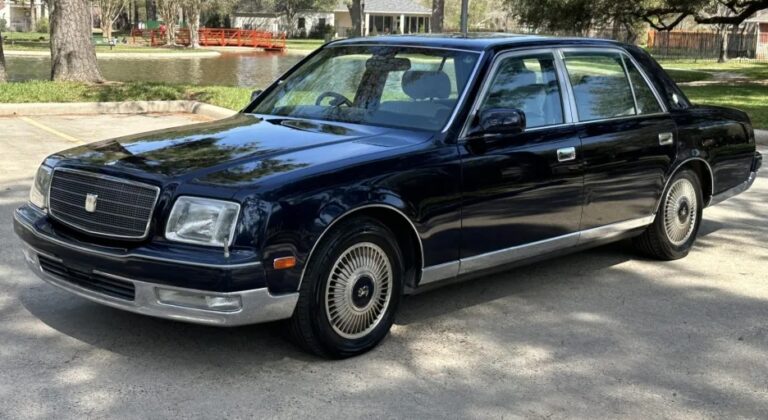The Car That Built a Legend: The Evolution of the Rolls-Royce Silver Ghost
In the annals of automotive history, few names command as much reverence as Rolls-Royce. The brand is a byword for opulent luxury, silent operation, and uncompromising quality. Yet, this towering reputation was not born overnight; it was forged in the crucible of early 20th-century motoring by a single, extraordinary machine: the 40/50 H.P., known to the world as the Silver Ghost. Produced for nearly two decades, its story is not one of static perfection, but of constant, meticulous evolution that cemented its claim as “The Best Car in the World.”
The Genesis of Perfection (1906-1907)
The story begins with the obsessive engineering genius of Henry Royce and the aristocratic salesmanship of the Honorable Charles Rolls. Their partnership, brokered by Henry Edmunds, was founded on a simple principle articulated by Royce himself: “Take the best that exists and make it better.” After producing a series of well-regarded two, three, and four-cylinder cars, Royce set out to create a flagship model that would silence all critics and rivals. His target was the inherent vibration and noise of the era’s engines. The solution was a new, large-capacity six-cylinder engine, a configuration that promised unparalleled smoothness.
Unveiled at the London Olympia Motor Show in late 1906, the new Rolls-Royce model was officially designated the “40/50 H.P.,” referring to its taxable horsepower (40) and its actual output (around 50). The centrepiece was its magnificent 7036cc side-valve, straight-six engine. Cast in two blocks of three cylinders, it featured a seven-bearing crankshaft that was meticulously balanced to quell vibration. Pressurised lubrication, a rarity at the time, ensured durability and quiet running. This engine was mated to a three-speed gearbox (a four-speed from 1909) and mounted in a robust, conventional ladder-frame chassis.
From the outset, Rolls-Royce adopted a “one-model policy,” pouring all its resources into perfecting the 40/50 H.P. chassis. This decision was pivotal, allowing for a concentrated focus on quality and refinement that was impossible for manufacturers producing a wide range of models.
.
THIS could come in handy for your auto garage (and everywhere else!):

.
The Birth of a Name (1907)
While the 40/50 H.P. chassis was an engineering marvel, it was the marketing acumen of the company’s managing director, Claude Johnson—often called “the hyphen in Rolls-Royce”—that transformed it into a legend. For the 1907 Scottish Reliability Trials, Johnson ordered the twelfth 40/50 H.P. chassis, number 60551, to be fitted with a striking open tourer body by Barker & Co. The car was painted a lustrous silver, and its fittings—from the headlamps to the dashboard instruments—were silver-plated. Johnson christened it “The Silver Ghost” to evoke its spectral silence and ethereal appearance.
He then entered the car, road-registered as AX201, into the gruelling 2,000-mile trial. It performed flawlessly. To further demonstrate its supernatural reliability, Johnson immediately drove the car on a 15,000-mile endurance run, covering the distance between London and Glasgow 27 times. The entire journey was completed with only one involuntary stop, and the final repair bill for wear and tear was a minuscule £2 2s 7d. The press was astounded. The name “Silver Ghost” captured the public imagination and, though initially a nickname for a single car, it soon became the de facto name for all 40/50 H.P. models, a testament to its profound impact.
Pre-War Evolution and “Models” of Distinction (1908-1914)
It is crucial to understand that Rolls-Royce did not offer “trim levels” in the modern sense. The company produced only the rolling chassis: the frame, engine, gearbox, axles, suspension, radiator, and dashboard. The customer would then commission a bespoke body from one of the great coachbuilding houses of the day, such as Barker, Hooper, Mulliner, or Park Ward. Therefore, every Silver Ghost was unique, its “trim” dictated by the owner’s taste and the coachbuilder’s artistry.
The evolution of the Silver Ghost was instead marked by continuous mechanical refinement of this standard chassis.
- 1909: The engine capacity was increased from 7036cc to 7428cc by lengthening the stroke, providing more torque for the increasingly heavy and luxurious limousine bodies being fitted. The original three-speed gearbox was replaced by a more versatile four-speed unit, with third gear being direct drive and fourth an overdrive for high-speed touring.
- 1911: The iconic cantilever rear springs were introduced, replacing the semi-elliptical units. This significantly improved ride comfort, isolating occupants from the poorly surfaced roads of the era and contributing to the car’s famously serene progress.
- The “London-to-Edinburgh” Type (1911): While not an official model, this designation was given to a specific type of chassis developed for the 1911 London-to-Edinburgh Trial. It featured a higher compression ratio, a larger carburettor, and a lightweight, aerodynamic “torpedo” body. The car, driven in top gear for the entire 800-mile journey, averaged an impressive 19.5 miles per gallon and achieved over 78 mph at the Brooklands circuit, proving the Ghost’s performance credentials. These sportier chassis became highly sought after by owner-drivers.
- The “Alpine Eagle” (1913-1914): The most famous pre-war evolution was the “Alpine Eagle.” Developed after a convincing victory in the punishing 1913 Austrian Alpine Trial, this version was considered the ultimate sporting Ghost. It incorporated several key upgrades: a higher ground clearance, a more robust four-speed gearbox with a direct-drive top gear for better hill-climbing, a larger-capacity radiator for improved cooling, and an increased engine output of around 80 H.P. The Alpine Eagle is often considered a distinct sub-model and remains one of the most desirable of all Silver Ghosts.
A Ghost at War (1914-1918)
The outbreak of World War I saw the Silver Ghost’s legendary toughness repurposed for military service. While production of civilian cars ceased, the chassis became the basis for the iconic Rolls-Royce Armored Car. Clad in steel plate and armed with a Vickers machine gun in a rotating turret, these vehicles proved astonishingly reliable in the harshest theatres of war, from the Western Front to the deserts of the Middle East. T.E. Lawrence (“Lawrence of Arabia”) famously led a convoy of nine Silver Ghost-based armoured cars, remarking that “a Rolls in the desert was above rubies.” Their service was a brutal but undeniable testament to the fundamental rightness of Henry Royce’s design.
Post-War Modernization and the American Ghost (1919-1926)
Production of the civilian Silver Ghost resumed in 1919, but the world had changed. The car now faced a market that demanded greater convenience. Rolls-Royce responded with two of the most significant updates in the model’s history:
- Electric Starting and Lighting (1919): The cumbersome and often dangerous hand-crank was replaced by a reliable electric starter. Electric lighting replaced the old acetylene and oil lamps. This single change transformed the Ghost from a car requiring a chauffeur’s brute strength to one that could be easily operated by an owner-driver.
- Four-Wheel, Servo-Assisted Brakes (1923-1924): As traffic and speeds increased, the original rear-wheel-only brakes became inadequate. In 1923, Rolls-Royce introduced four-wheel brakes, licensed under the Hispano-Suiza patent. This system used a mechanical servo driven by the gearbox, which multiplied the driver’s pedal effort, providing powerful and progressive stopping power without physical strain. It was a revolutionary safety feature that kept the aging design competitive.
The post-war era also saw a major expansion. To meet burgeoning American demand and bypass steep import tariffs, Rolls-Royce of America was established, opening a factory in Springfield, Massachusetts, in 1921. The Springfield Silver Ghost was largely identical to its British counterpart from Derby, though they often featured American-sourced components, such as Bosch or Westinghouse electrical systems. More significantly, they were bodied by renowned American coachbuilders like Brewster & Co. (which Rolls-Royce eventually acquired), giving them a distinct, often more flamboyant, aesthetic compared to the more conservative British bodies.
The End of an Era (1925-1926)
By the mid-1920s, despite the updates, the Silver Ghost’s fundamental side-valve engine design was becoming dated. Competitors were introducing more efficient overhead-valve engines. After a remarkable production run, the final Derby-built Silver Ghost chassis was completed in 1925, and the last Springfield model in 1926. It was replaced by the technically superior “New Phantom” (later known as the Phantom I), which featured a modern overhead-valve engine.
In total, 7,874 Silver Ghost chassis were produced over its 19-year lifespan: 6,173 in Derby, England, and 1,701 in Springfield, USA.
Legacy
The evolution of the Rolls-Royce Silver Ghost is a masterclass in engineering integrity and adaptive refinement. It was born in an era of automotive infancy and survived into the modern age of motoring through a process of constant, thoughtful improvement. It never underwent a radical redesign because its core engineering was so fundamentally sound. From the first silent 40/50 H.P. to the sporting Alpine Eagle, the battle-hardened armoured car, and the sophisticated, servo-braked limousines of the 1920s, the Ghost platform proved its versatility.
More than any other car, the Silver Ghost established the bedrock values of the Rolls-Royce brand: peerless quality, uncanny silence, and absolute reliability. It was not merely a car; it was a phenomenon that earned its title as “The Best Car in the World” not through marketing hyperbole, but through mile after silent, faultless mile.







